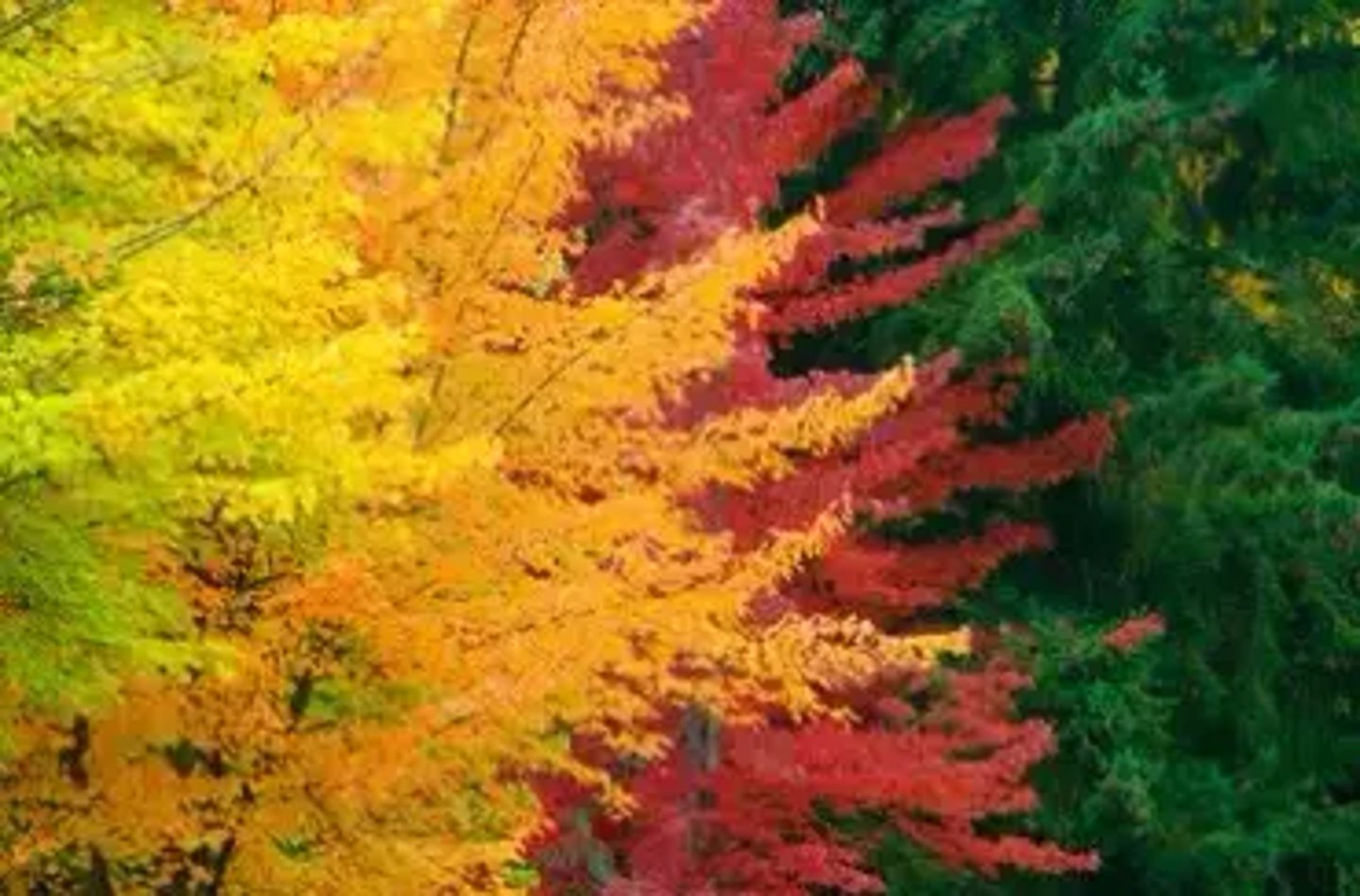AP Bio Unit 3
1/29
There's no tags or description
Looks like no tags are added yet.
Name | Mastery | Learn | Test | Matching | Spaced |
|---|
No study sessions yet.
30 Terms
UNIT 3
Cellular Energetics
What are enzymes?
1. Proteins that catalyze (speed up) reactions.
2. The enzyme is not used up in the reaction, they can be used again and again.
The names of enzymes usually end in "ase"
ex: lactase, amylase, sucrase, ATP synthase
How do an enzymes work?
1. Enzymes have a sort of mouth called the active site where a substrate goes.
2. The substrate is something that is reacting. The substrate IS used up in the reaction.
3. Each enzyme is designed for a specific substrate, the substrate fits into the specific enzymes active site.
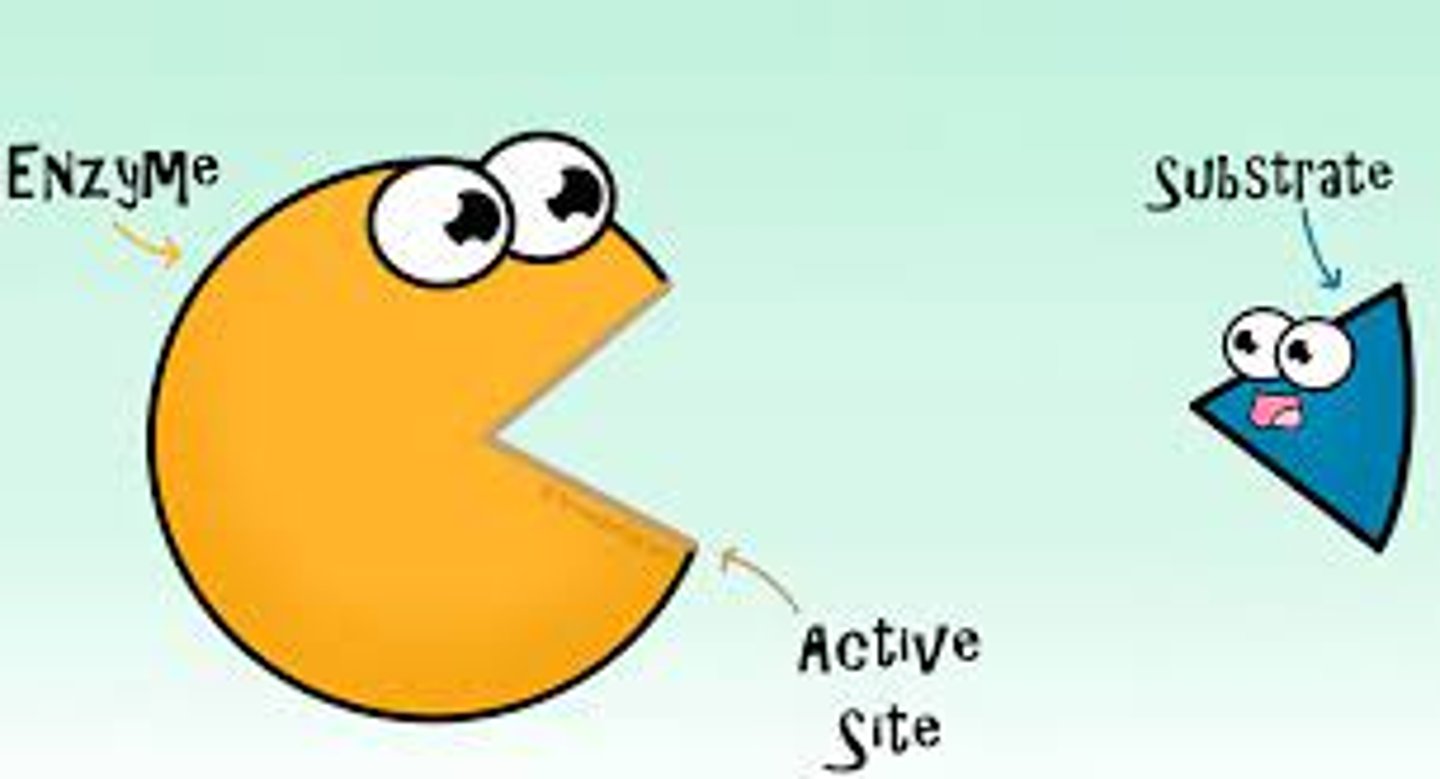
sucrase example on back of card

What is induced fit?
The enzyme gives the substrate a hug. I.e. the enzyme changes its shape a little so the substrate fits

what is competitive inhibition?
if something has a similar shape to the substrate, it might fit into the active site and block substrates from getting in, making the enzyme not function anymore.
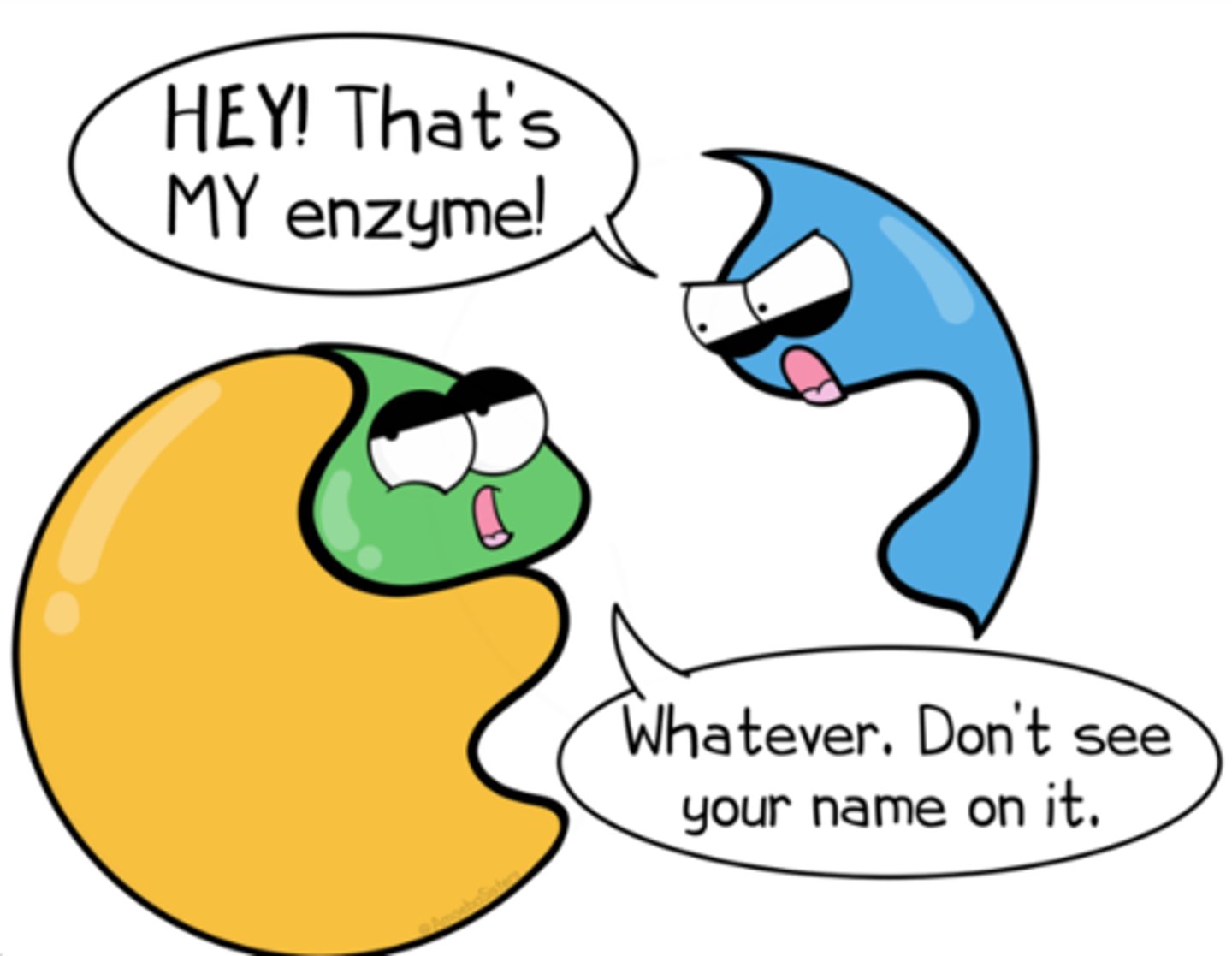
What is noncompetitive inhibition?
A noncompetitive inhibitor will bind to the enzyme's allosteric site and the active site will change shape, so the enzyme will not function anymore
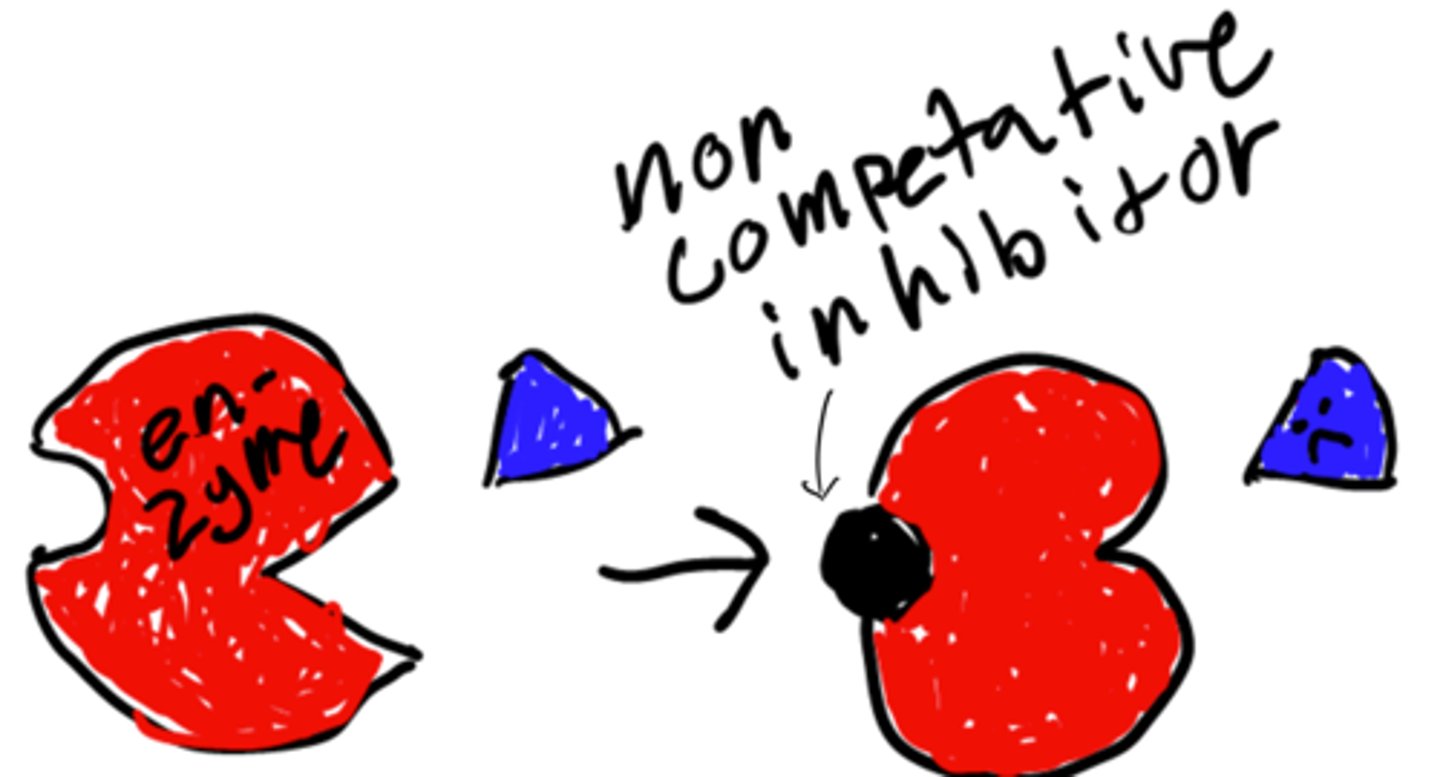
What is a cofactor/coenzyme?
Something that goes into the active site to help the substrate fit

How do enzymes catalyze reactions?
Enzymes lower activation energy
remember that phrase for the AP

What factors can affect enzyme function?
1. Temperature: to high or to low of a temperature can denature the enzyme
2. PH: To high or to low PH can also denature the enzyme.
recall that denatured proteins go back to primary folding structure.
3. Amount of substrate: if there is a lot of substrate, there won't be enough enzymes to break all of it down.
ex: lactose intolerant people often still have some lactase, just not enough to break down all the lactose.
4. inhibitors
What happens when a cell is using more energy than it makes?
it dies.
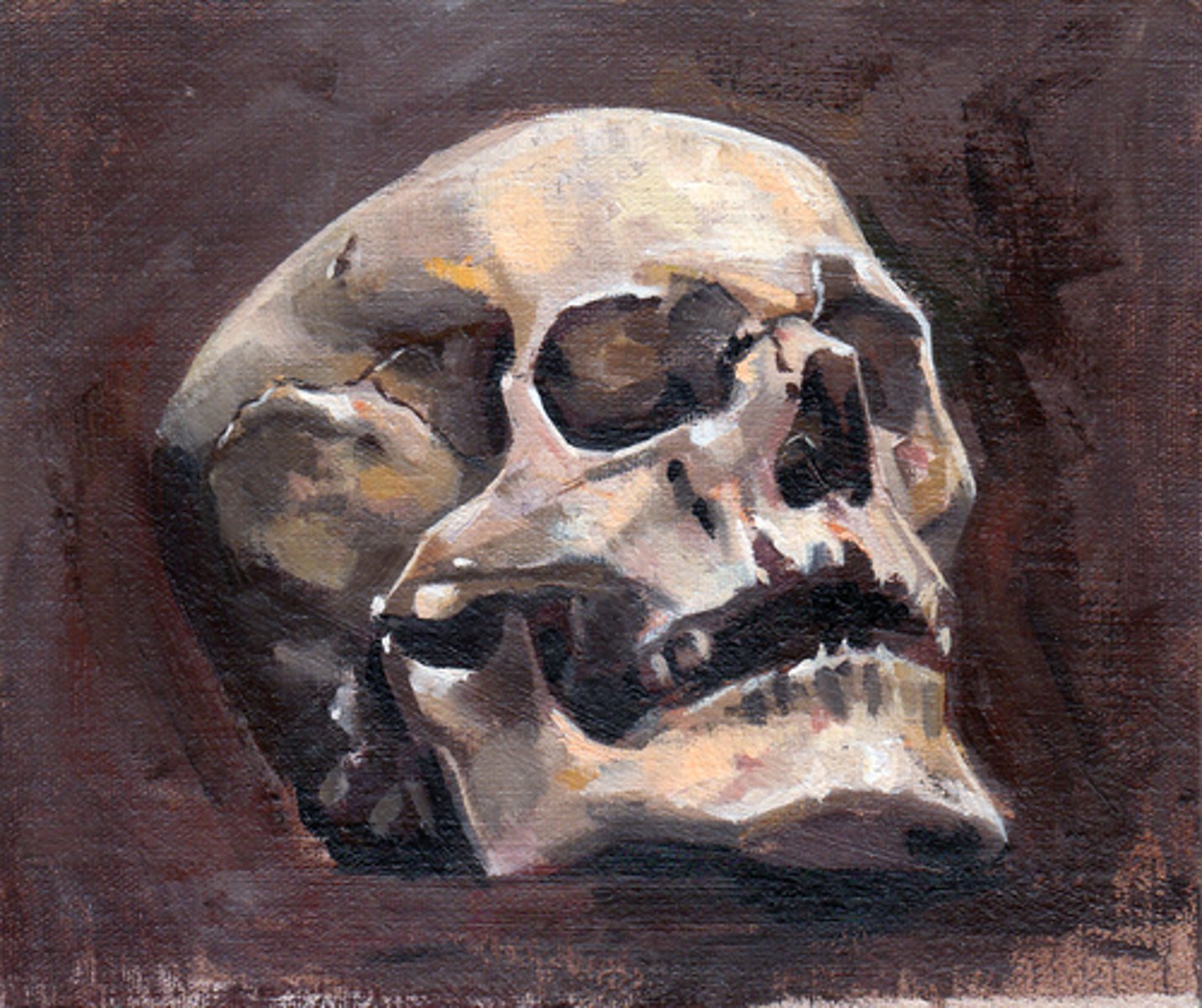
what is a metabolic pathway?
A series of reactions that form a final product. The product of one reaction goes on to be a reactant in another reaction and so on until the final product is made.

Equation for photosynthesis
6 water and 6 carbon dioxide make a glucose and 6 dioxygens
6CO2 + 6H2O ------> C6H12O6 + 6O2
the 6O2s are "breathed" out
What is the goal of photosynthesis?
capture energy from the sun to make sugars (glucose)
Where did photosynthesis first evolve?
Cyanobacteria
First phase of photosynthesis:
Light dependent reactions (electron transport chain)

First step of electron transport chain:
1. Photosystem 2 is energized by light, which splits an H2O
2. water splitting provides an electron (e-) and pumps an H+ ion through the transport protein
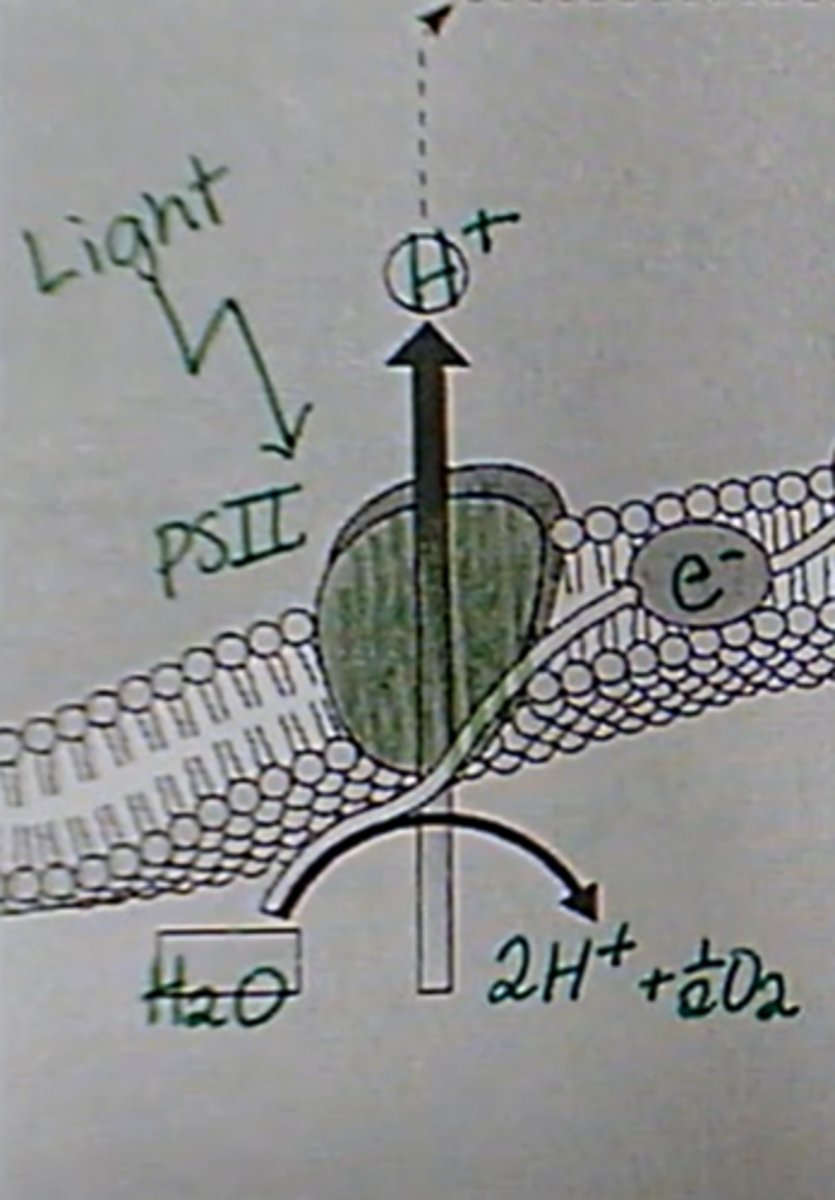
Second step of electron transport chain:
The highly energized e- goes to the next transport protein, supplying the energy to pump another H+ ion through
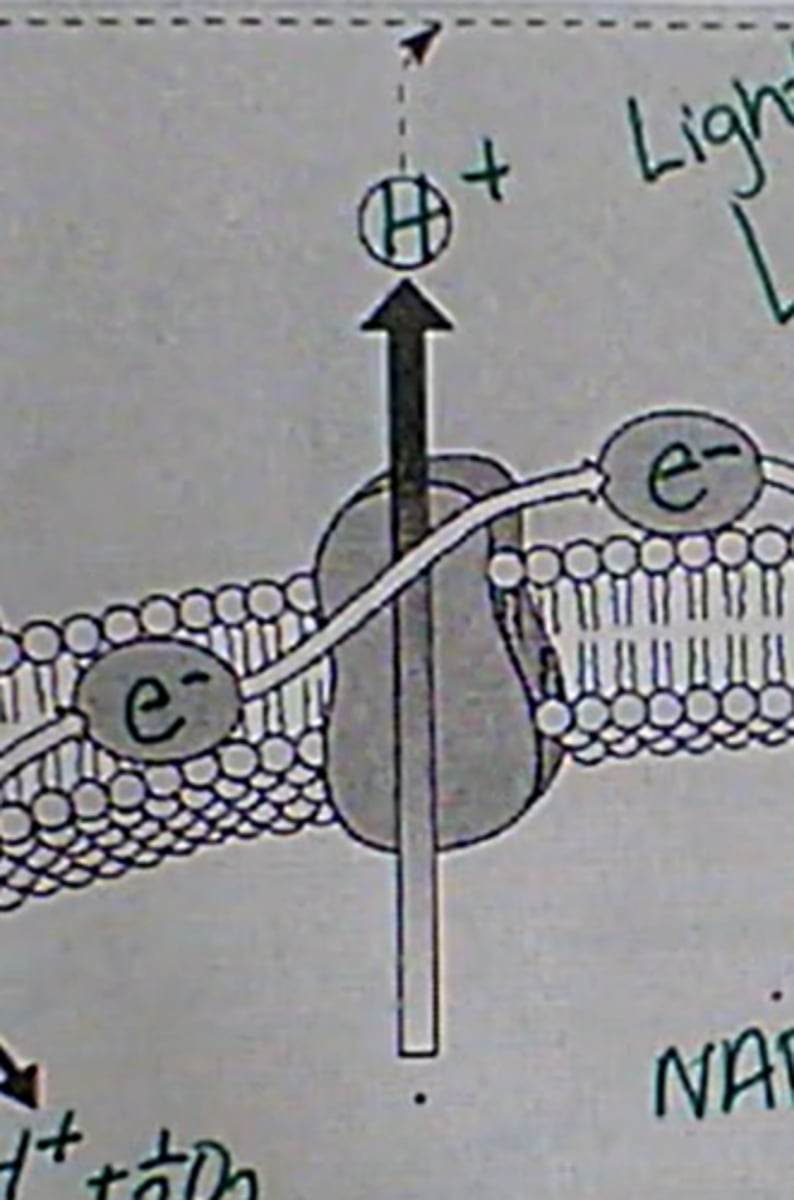
Third step of electron transport chain:
1. The electron moves to Photosystem 1 and is energized by light again
2. Another H+ is pumped through a transport protein.
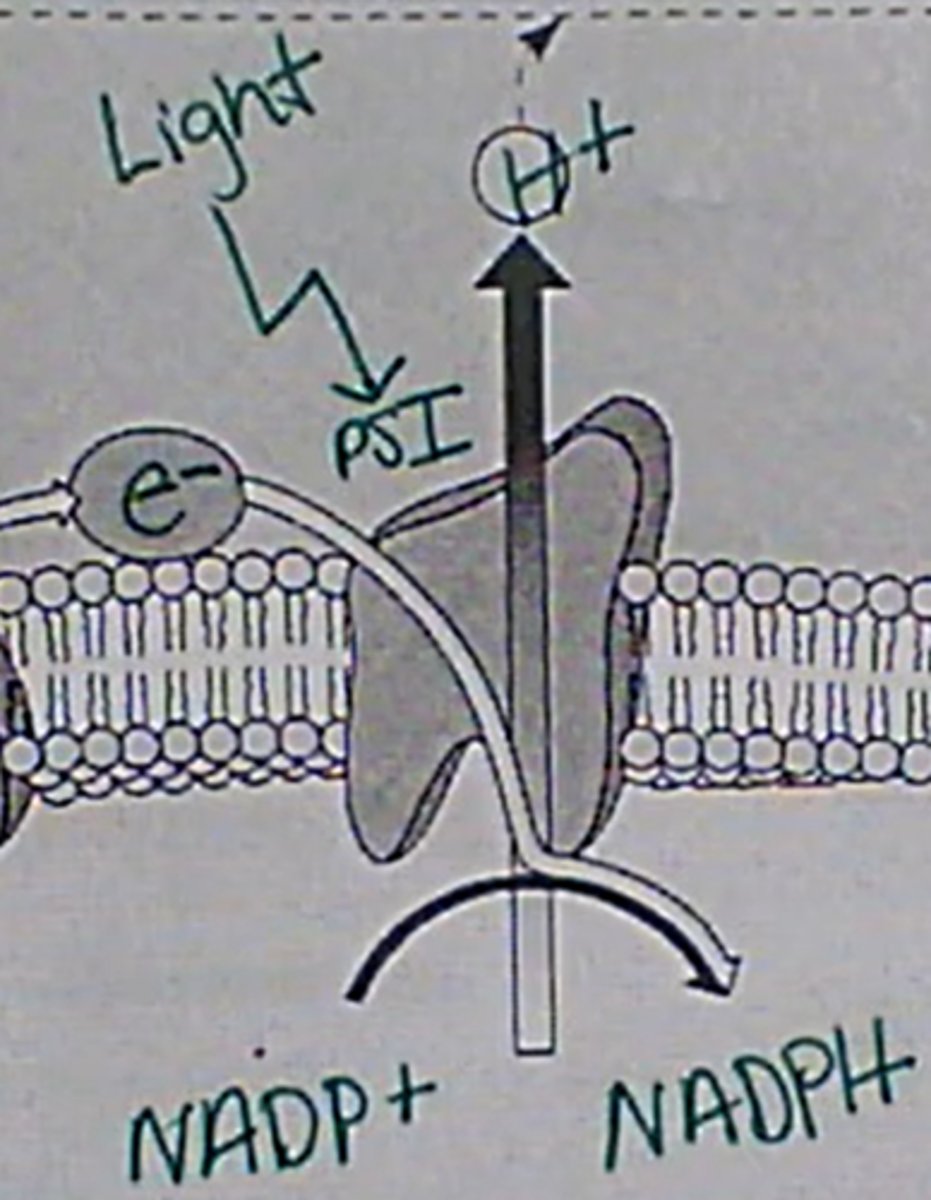
Fourth step of electron transport chain:
The electron can't just float around after this wreaking havoc, so NADP+ accepts the e-, turning it into NADPH

Fifth and final step of electron transport chain:
1. Because there is now a bunch of H+s at the top, they want to flow down via diffusion because of the concentration gradient.
2. The 3 H+s flow through the enzyme ATP synthase, which adds a phosphate to ADP (adenosine diphosphate) to make ATP (adenosine triphosphate).
ATP synthase is both an enzyme and a transport protein. Remember ions need to diffuse through proteins, and things that end in "ase" are enzymes.
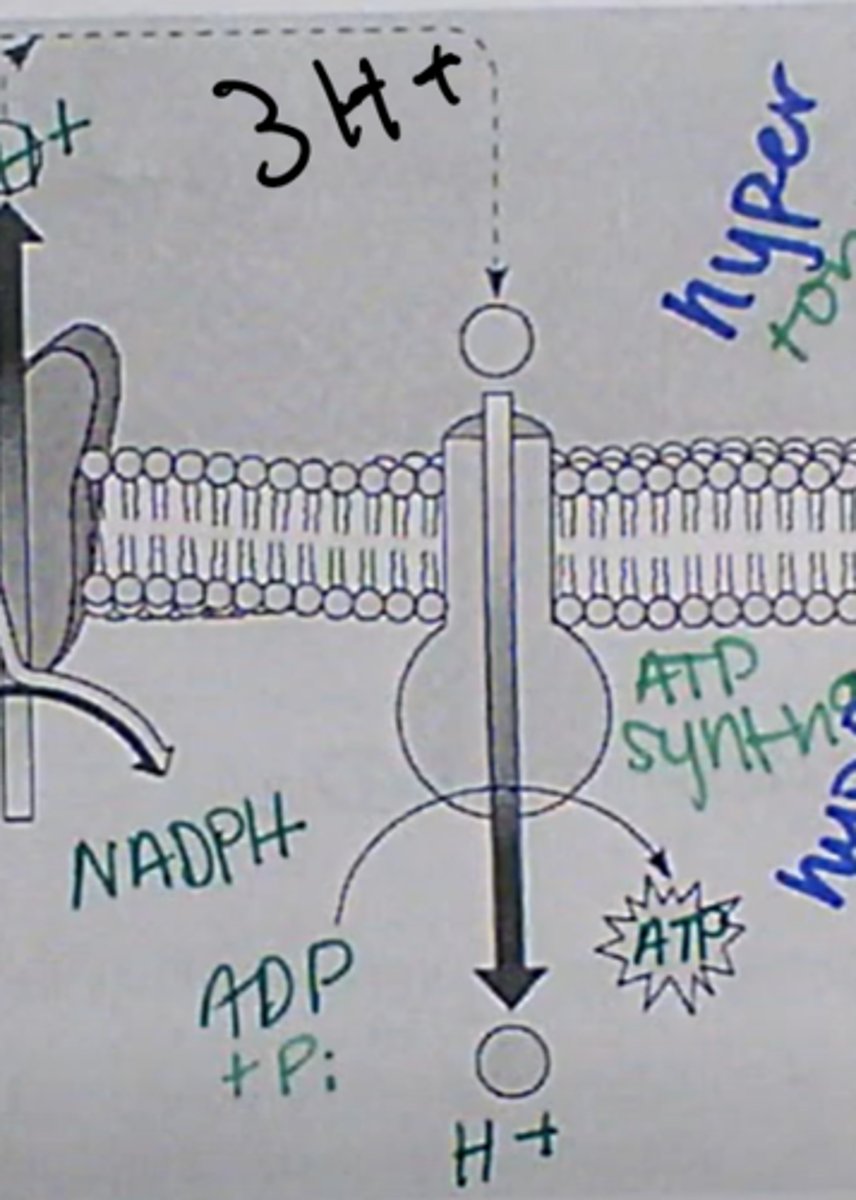
Second phase of photosynthesis:
Light independent reactions (Calvin cycle)
What happens in the Calvin cycle?
1. 3 CO2 molecules are taken in
2. 6 ATP and 6 NADPH are spent (came from e- transport chain. ATP turns to ADP and NADPH turns to NADP+)
3. the oxygen and 3 carbons from 3 CO2 and the 6 Hydrogens from 6NADPH come together to make half of a glucose
4. The Calvin cycle goes around again providing more oxygen, 3 more carbons and 6 more hydrogens to make the other half of glucose (C6 H12 O6)
Glucose is the final product
Chemical equation for cellular respiration
glucose and 6 dioxygens make 6 water and 6 carbon dioxide and a bunch of ATP
C6H12O6 + 6O2 --> 6CO2 + 6H2O + ATP
Opposite of photosynthesis equation
Step 1 of cellular respiration (CR):
Glycolysis (occurs in cytoplasm):
1. 2 ATP is used to split 1 glucose (C6H12O6) into 2 C-C-C-P
(the phosphorus comes from the ATP)
2. To get rid of the phosphorus, 2 ATP is made for each, turning them into C-C-C (Pyruvate).
3. NAD+ accepts the electrons created from this turning it into NADH
Produced in this step:
2 ATP spent, 4 ATP made
2 NADH made
2 Pyruvate made
Net produced: 2 ATP, 2 NADH
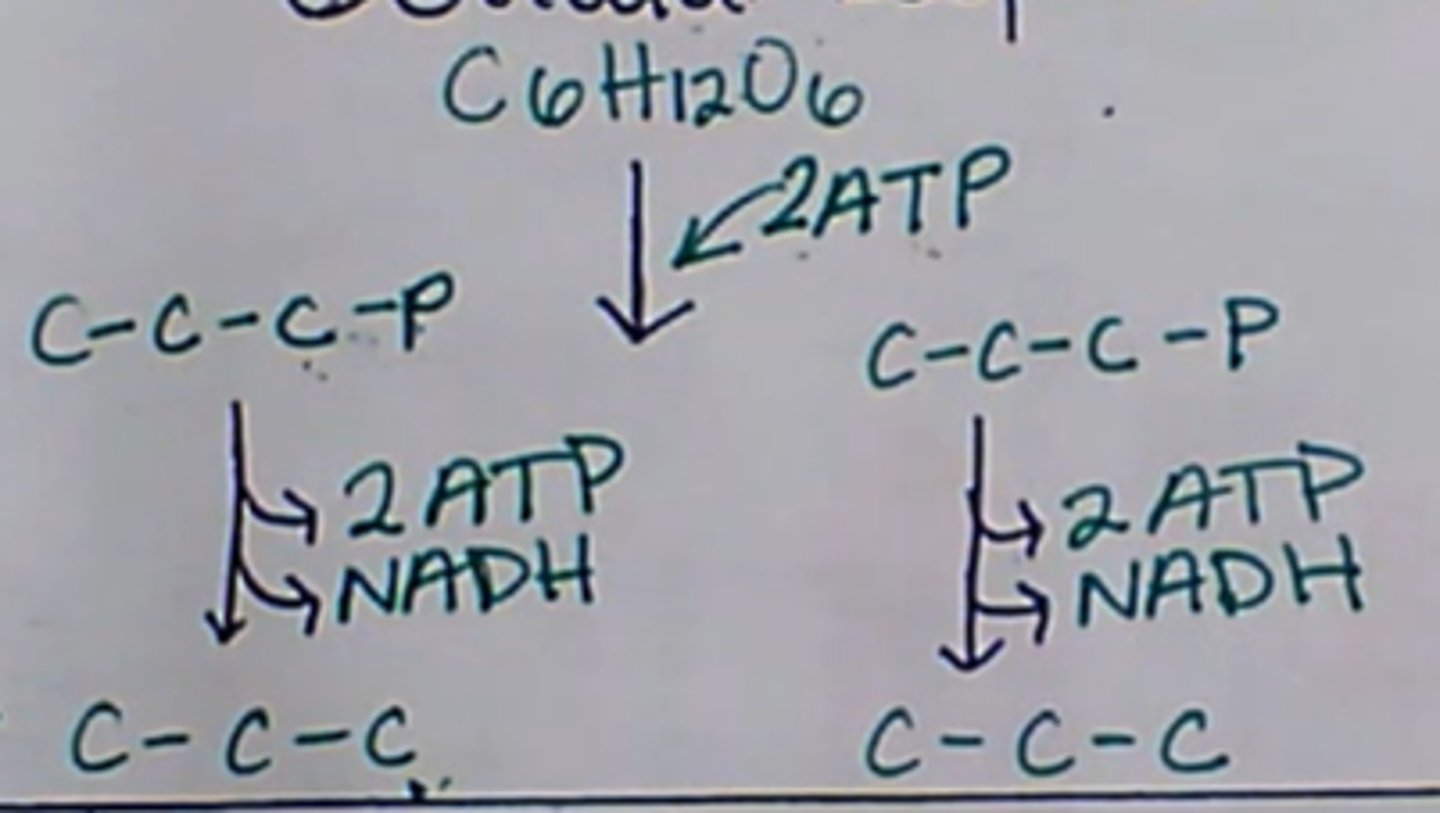
Step 2 of CR:
Pyruvate oxidation (occurs in mitochondria):
Two CO2 molecules are made from each of the pyruvate, turning them from C-C-C into C-C (acetyl-coA). NAD+ accepts electrons again making more NADH.
Produced this step:
2 CO2 made (gets breathed out)
2 NADH made
Net produced: 2 ATP, 4 NADH
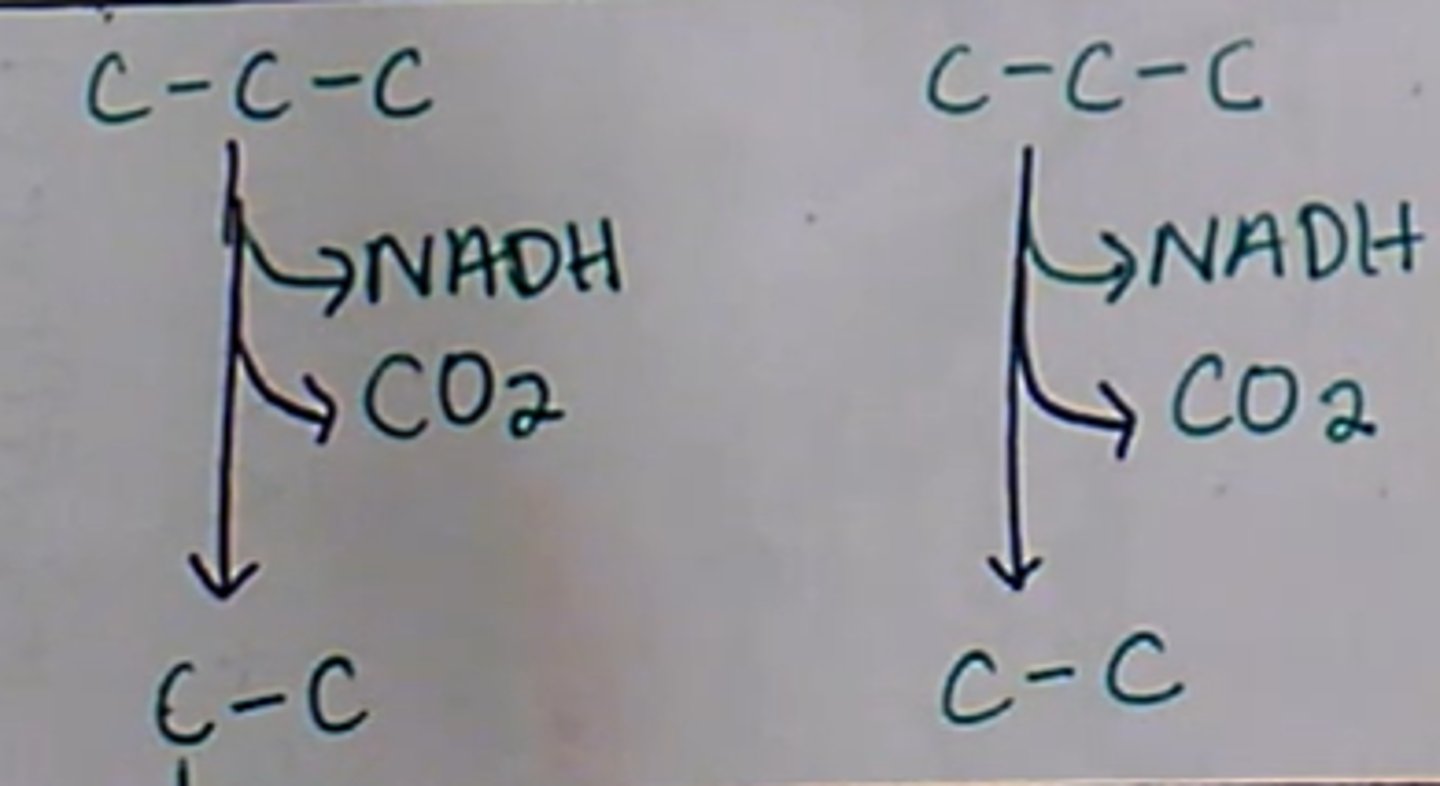
step 3 of CR:
Krebs cycle/citric acid cycle (in mitochondria):
1. the acetyl-coA (C-C) go through the Krebs cycle. Details aren't important, but know what this makes
2. makes 3 NADH, 1 ATP, FADH2, and 2CO2 (breathed out)
3. this happens twice to use both the acetyl-coA
Produced this step:
2 ATP made
6 NADH made
2 FADH2 made
Net produced: 4 ATP, 10 NADH, 2 FADH2
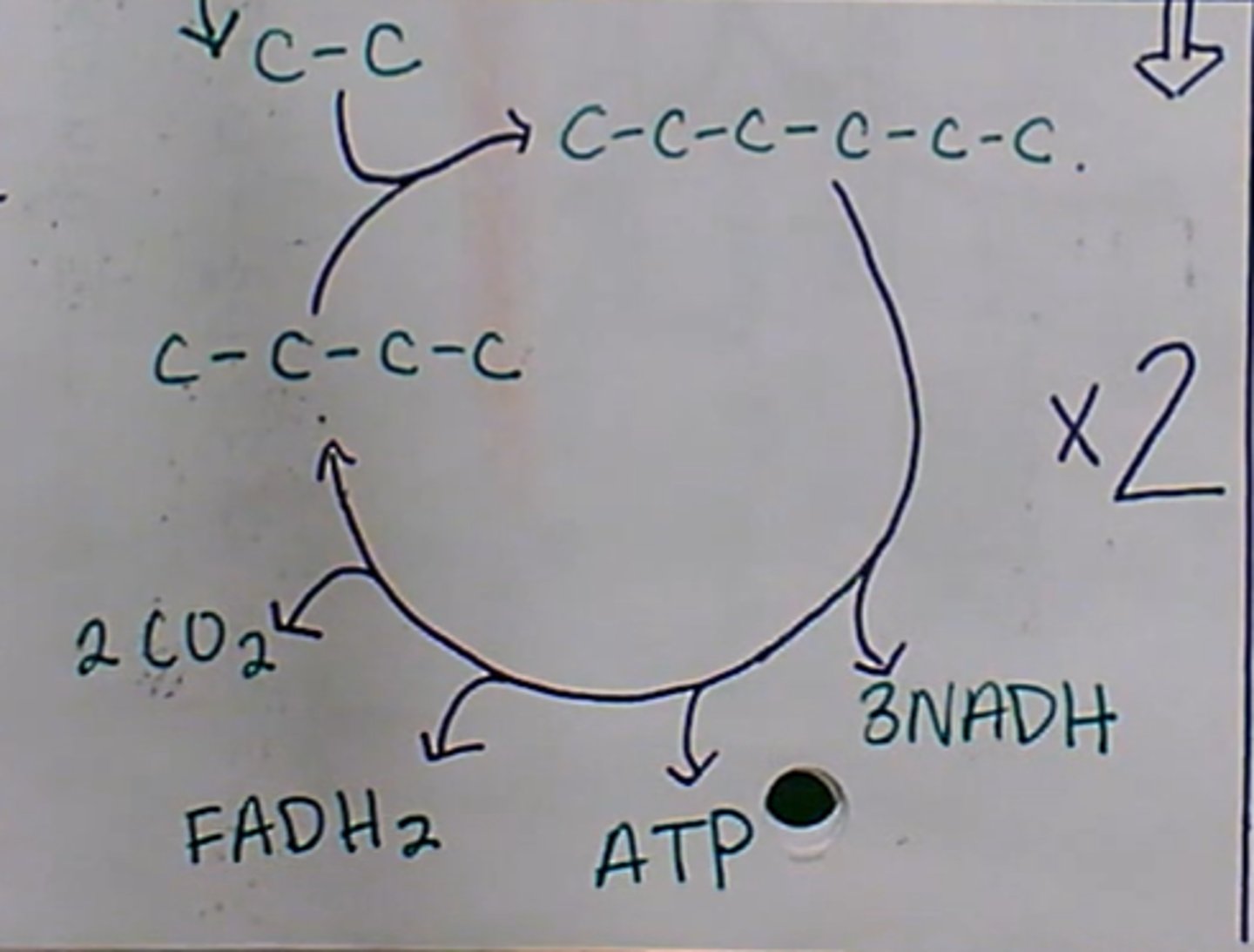
Step 4 of CR
Electron transport chain/oxidative phosphorylation (in mitochondria):
1. NADH gets made back into NAD+, supplying 2 electrons (the whole purpose of them was to carry the e-s to this step.) This pumps an H+ ion through a transport protein.
2. FADH2 splits into FAD, supplying 2 more e-s, pumping more H+ through
3. electrons pump more H+ through another protein.
4. Because e-s can't just float around, the e-s combine with 1/2 O2 and 2H to make water.
5. Because of the concentration gradient, all the H+s (there is a lot, varies by organism) flow through ATP synthase to make ADP into ATP
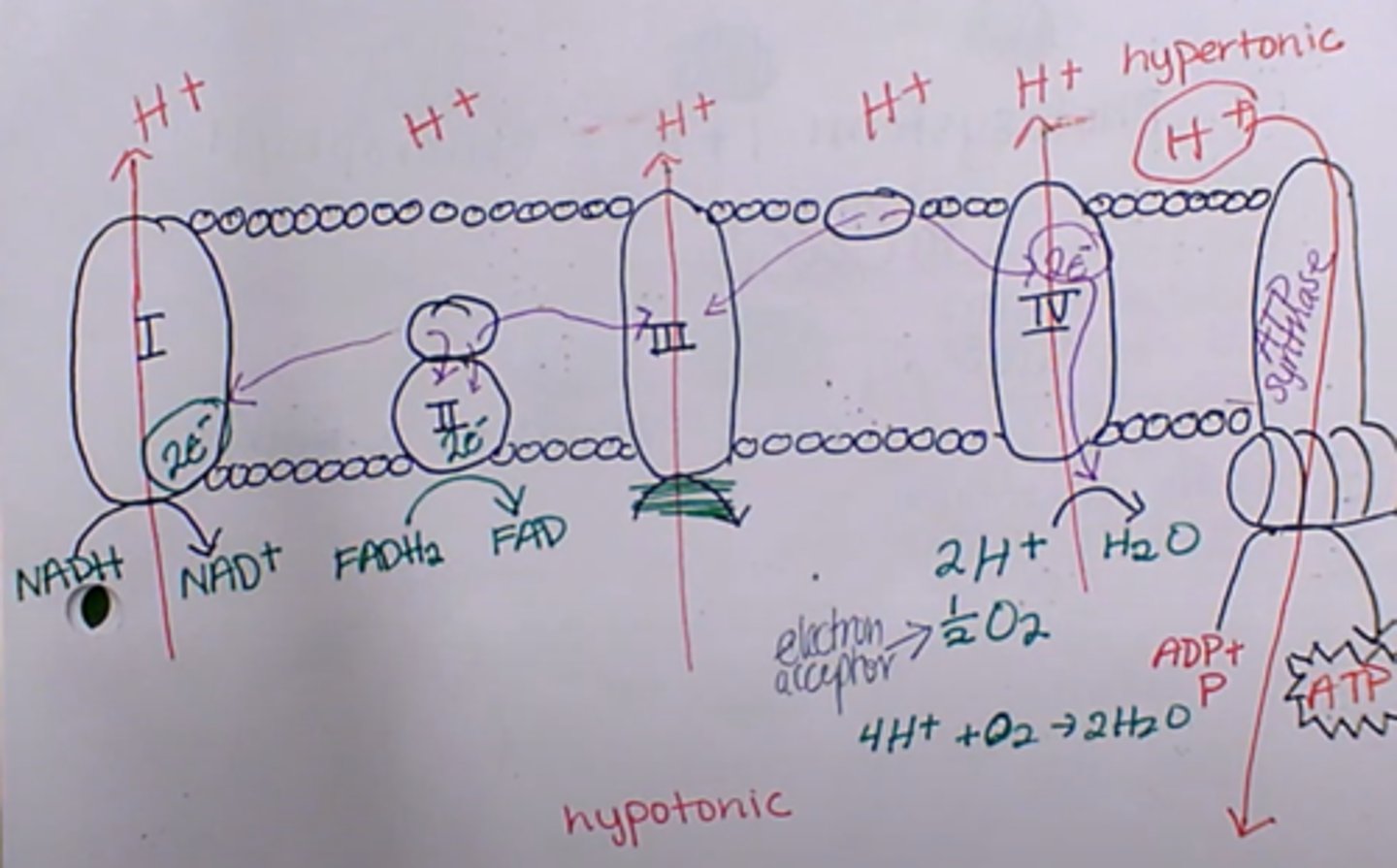
TOTAL CREATED:
Electron transport chain:
About 30 ATP from the NADH electrons
About 4 ATP from the FADH2 electrons
First three steps:
4 ATP
TOTAL: about 38 ATP! (varies per organism, can be as low as 30)
This all was made from one glucose
Why is it better for different chloroplasts in different cells to be different colors/different shades of green?
They will be able to absorb different wavelengths of light, which means more energy, the plants will be more fit.
